
The 2018 NBA Draft was littered with high-profile big men, with Deandre Ayton, Marvin Bagley III, Jaren Jackson Jr., Mo Bamba and Wendell Carter Jr. all landing in the top seven picks in June. Given the build-up to draft night, it wasn’t a surprise to see that quintet of players selected (very) early in the process but, through the scope of a changing NBA, it was a bit jarring to see that many “true” bigs near the top of the pecking order.
With that as the backdrop, the stage is set for something of a reckoning in 2019. There is a very real possibility that no traditional big men will be selected in the top ten. Zion Williamson could be seen as a “big” in some ways but, if you remove his ridiculous combination of traits from the table, no other prospect is a clear-cut top 10 pick and that paves the way for a previously unheralded center from Texas to crash the party.
Jaxson Hayes’ numbers won’t blow you away, as the freshman is averaging only 10.5 points and 5.2 rebounds per game on a relatively uninspiring Longhorns team. For good measure, he wasn’t a five-star prospect well-known on the AAU/EYBL circuit and Hayes doesn’t have the polished offensive profile of players like Ayton and Carter in 2018. However, he does bring an interesting package of skills to the table and, while they may not present over-the-top upside on the offensive end, Hayes does fit the modern mold.
He doesn’t have a jump shot to speak of at this point but Hayes stands at 6’11 with a 7’4 wingspan and displays high-end athleticism. There isn’t a player in this class that can mirror him in terms of athleticism and length at the center position and, while he needs to rebound at a (much) higher level, Hayes can protect the rim on one end and act as a rim-runner on the other.
There are swing skills with Hayes, including his ability to defend in space on the perimeter and whether he can stay on the floor given his foul-prone nature at the college level. Still, teams will know the archetype they are selecting when considering Hayes in the lottery and it feels like a safe bet that an organization could fall in love with him pretty early in the draft, even without the obscene upside associated with a 20-point scorer at the position.
Where does Hayes fall in our latest mock draft? Let’s find out.
*Note: Draft order using FiveThirtyEight projection as of Feb. 14*
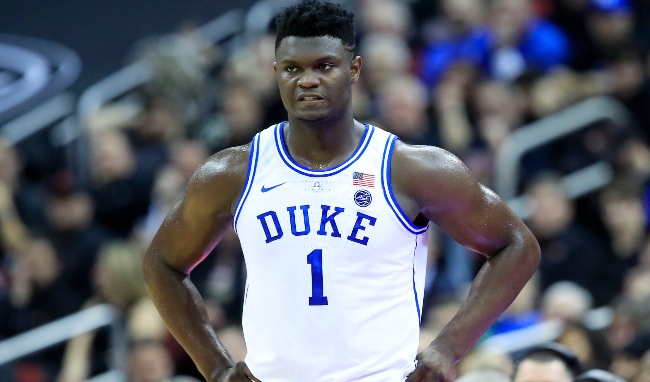
1. New York Knicks – Zion Williamson (F, Duke)
With flattened lottery odds, no NBA team has better than a 14 percent chance at the No. 1 pick but this would (obviously) constitute a dream scenario for the Knicks. New York is betting big on this summer and, with the rights to Williamson in their back pocket, the Knicks would be in a much better position. As for Williamson himself, he’s by far the best prospect in this class to the point where discussing it is almost silly.
2. Phoenix Suns – Ja Morant (G, Murray State)
I’ll be honest and say that this scares me a little bit. Morant is a scary athlete with enough length to do what he needs to do on the floor and his college production has been, well, obscene. There are still holes in his game (it’s easy to be worried about his jump shot) but the Suns landing in the top-two is probably the clearest way to put him in the mix. Phoenix has a gaping hole at the position and Morant is in the second-tier behind Williamson. It makes sense.
3. Cleveland Cavaliers – R.J. Barrett (G/F, Duke)
I’m lower on Barrett than some, to the point where the concerns make me consider other players even at No. 3 overall. He’s still the highest-rated player available on my board, however, and Barrett has done enough at the college level to assuage some of that doubt. Is he going to be a willing passer? Will his relative lack of explosiveness hurt him at the NBA level? There are questions to be answered but he’s still a top-three guy right now.
4. Chicago Bulls – Cameron Reddish (F, Duke)
Reddish hasn’t been incredible at Duke and he’s a streaky shooter at this stage. If you want to be negative about him, there are ways to get there. I’ll take the opposite approach in saying that he’s a legitimate 6’9 with ball skills and a gorgeous jumper. Then, I’ll tell you that Reddish has every tool you’d want in a potential defensive monster. He’s still a top-five prospect.
5. Atlanta Hawks – De’Andre Hunter (F, Virginia)
Hunter probably isn’t the 5th-best talent in this class. He isn’t an elite athlete and it is hard to see him as a primary scoring option in the NBA. What he does bring, though, is perfectly translatable skill set to the modern NBA, with the ability to defend multiple positions (at a high level) and space the floor offensively. At some point, the Hawks need to find players with defensive talent to pair with their core of Trae Young, John Collins and Kevin Huerter. Hunter would be a great fit under that guise.
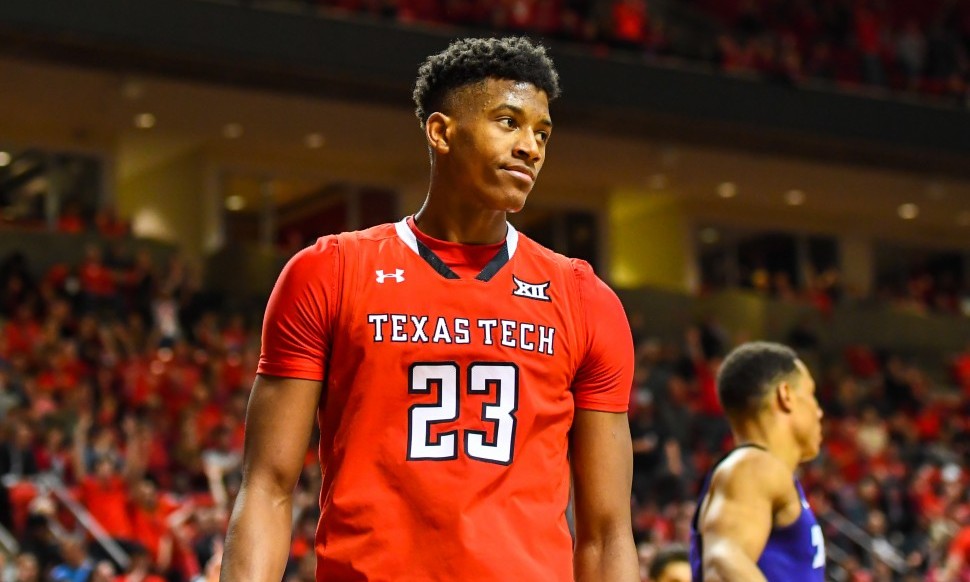
6. Memphis Grizzlies – Jarrett Culver (G/F, Texas Tech)
Culver has cooled off as a three-point shooter and that is potentially concerning, if only because he’s going to need to make shots at the NBA level. There is still a ton to like about his game, though, with a smooth scoring style and an impressive feel for the game. Concerns about his overall burst athletically are justified but he has the look of a two-way player at the NBA level and the Grizzlies should be in best player available mode.
7. Washington Wizards – Nassir Little (F, North Carolina)
It’s been a weird year for Little, who is still playing fewer than 20 minutes per game in Chapel Hill. There are reasons for that (even if you don’t agree with them) but it’s time to see the big picture and realize he’s still an impressive two-way talent. Washington just jettisoned Otto Porter and, while Little may not move the needle, he’s a very good bet for the future.
8. Atlanta Hawks (via Dallas) – Keldon Johnson (F/G, Kentucky)
Johnson is exactly the kind of player that won’t inspire fans but should intrigue front offices. He brings a (very) high floor to the table with the ability to contribute on both ends and, if his shooting (41 percent from three this season) proves to be real, Johnson is an even better role player than originally thought. There isn’t off-the-charts upside but the Hawks add two exceptionally intriguing role players in this scenario. They could do worse.
9. Miami Heat – Romeo Langford (F/G, Indiana)
Scouts are all over the place on Langford, with some still viewing him as a potential top-five pick and others seeing him sliding beyond this point. We’ll take the middle approach of cautious optimism. He isn’t shooting the ball at the level he needs to and Langford has been frustratingly ball-dominant in college. He still has tools on both ends that will make you see the positive side but Langford is in a weird spot with how he’s playing.
10. Orlando Magic – Darius Garland (G, Vanderbilt)
Remember when everyone projected Trae Young to Orlando last season? That’s going to happen with Garland this time around. Somehow, the Magic still don’t have a point guard (at least until Markelle Fultz proves otherwise) and, if the draft order shakes out this way, Ja Morant is probably going to be off the board when Orlando chooses. I’m in on Garland and this is honestly a great value to go along with the obvious fit.
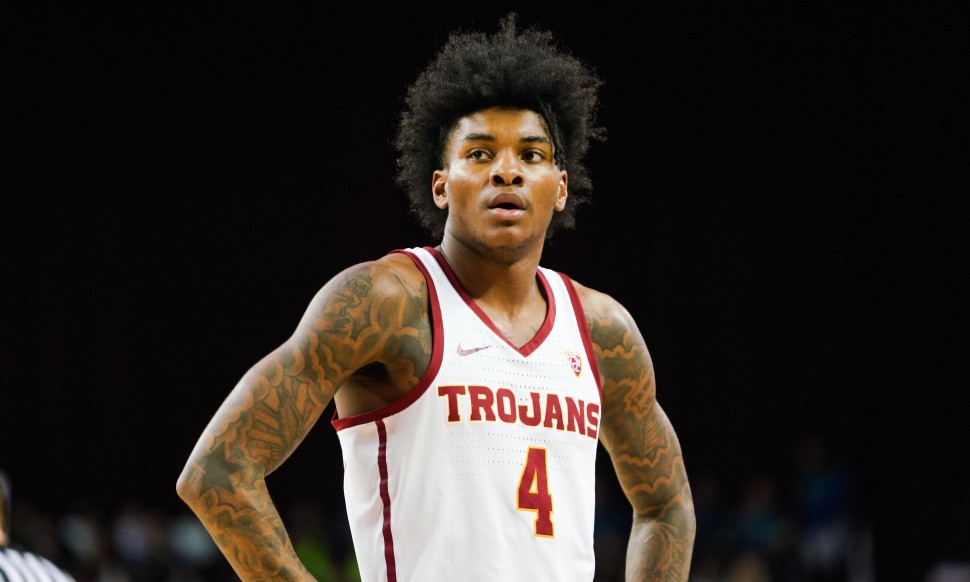
11. New Orleans Pelicans – Sekou Doumbouya (F, Limoges)
If the Pelicans embrace their long-term rebuilding destiny in the post-Anthony Davis era, Doumbouya would make sense. It’s difficult to peg where he might land because, in my opinion, he’s not really ready to make an impact in the NBA right now. Still, there is quite a bit of upside given his physical tools and young age, leaving New Orleans in a good spot to take a big swing.
12. Boston Celtics (via Sacramento) – KZ Okpala (F, Stanford)
The Pac-12 is a grease fire and, by proxy, very few people have watched Okpala outside of die-hard NBA Draft circles. Hopefully, that will change in the near future, because he brings a ton to the table, including great length and skill. I was skeptical early in the year but I’ve come around on Okpala as a pretty safe top-15 player.
13. Minnesota Timberwolves – Kevin Porter (G, USC)
Speaking of the Pac-12, Porter is a far different prospect than Okpala but perhaps an even more intriguing one. The uber-talented guard brings upside to the table in a way that a few players in the top 10 (i.e. Keldon Johnson) cannot and Porter might make a team look very smart. If it doesn’t work, though, the floor is… low.
14. Los Angeles Lakers – Jaxson Hayes (C, Texas)
This feels like a piece that the Lakers could move, simply because they aren’t really in “development” mode right now. Hayes is the best player available, though, and Los Angeles could use a long-term piece that will simply fill a role and doesn’t need the ball.
15. Charlotte Hornets – Rui Hachimura (F, Gonzaga)
The Hornets tend to gravitate toward veteran college players and Hachimura has been exceptionally productive. In fact, his numbers paint a picture of a potential top-10 pick but I’m a little less bullish, largely due to defensive concerns and uncertainty on how his jumper will work in the NBA. There’s a lot to like, though, and this might be too low.
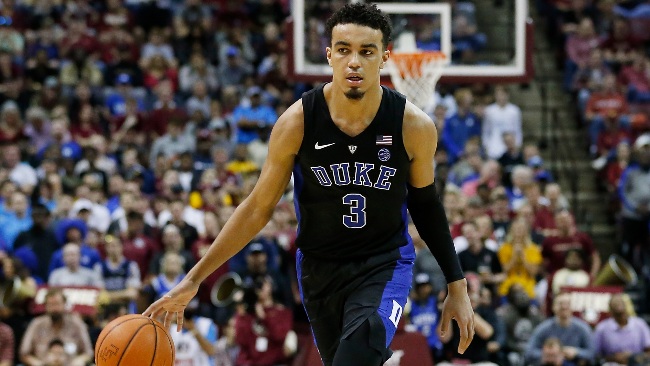
16. Detroit Pistons – Tre Jones (G, Duke)
Jones is a mid-first round talent in my opinion and this is one of the more logical landing spots for the Duke guard. The Pistons have an ugly point guard situation (and Ish Smith is coming off the books after this season) and, while Jones doesn’t have star upside offensively, he brings a ton of positive elements to the table.
17. Brooklyn Nets – Brandon Clarke (F, Gonzaga)
If you care about defense, you’re probably in love with Brandon Clarke. He might be the best overall defender in college basketball and his versatility on that end of the floor is staggeringly impressive. If you heavily favor offense, you probably won’t love Clarke as a prospect, particularly if you don’t buy in to his shooting in the long-term.
18. Boston Celtics (via LA Clippers) – Jontay Porter (C, Missouri)
Trying to find a buyer for Porter is interesting but Boston has so many assets that they can afford the mild risk. Porter is the most skilled big man in this class by a wide margin and, if not for the torn ACL, it is possible he’d be in the top-10 mix. Offensively, there isn’t much to worry about, even with his limited athletic tools. Defensively, concerns exist, from his slow feet to lack of projection as a rim protector. Boston could make it work and bring him along slowly behind Al Horford.
19. San Antonio Spurs – Grant Williams (F, Tennessee)
If Zion Williamson didn’t exist, Williams would probably be the front-runner for National Player of the Year in college and he’s been that good. His numbers are staggering and you might be wondering why he’s not a lottery pick. Well, he’s only 6’6 as a power forward and Williams hasn’t been a great college shooter. What he does bring is great awareness, instincts and finishing ability at the rim, combined with every reason to believe he’ll be able to defend in the NBA. There isn’t a ton of upside here but doesn’t this feel like a Spurs guy?
20. Portland Trail Blazers – Jalen McDaniels (F, San Diego State)
McDaniels is long, talented and athletic. This year, he’s matched that with production and, even amid questions about his jump shot, that package gets him into the mix as a late-first round prospect. Defining his role in the NBA will be interesting.
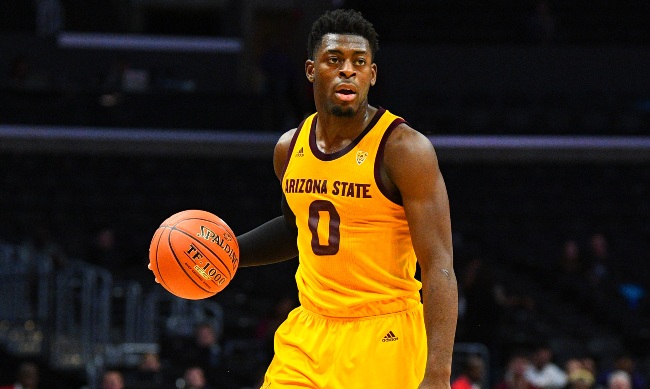
21. Indiana Pacers – Luguentz Dort (G, Arizona State)
It’s tougher to put the cape on for Dort right now than it was a few weeks ago, as he simply hasn’t been as good recently. It’s still easy to see how this works, though, with a physically powerful frame and the tools to contribute on both ends. Dort’s gotta make shots from the perimeter because he isn’t that quick and that’s the sticking point for some.
22. Utah Jazz – Nickeil Alexander-Walker (G, Virginia Tech)
Can you picture a pairing with Donovan Mitchell? I certainly can. It may not be perfect on defense, where Alexander-Walker isn’t an elite athlete, but he is incredibly skilled offensively and doesn’t need the ball to succeed. Throw in floor-spacing (41 percent from three) and you have a nice value selection for a team that values what he can do.
23. Cleveland Cavaliers (via Houston) – Bol Bol (C, Oregon)
It will stun some people to see Bol fall this far and, honestly, it may not happen. It is easy to be excited about his offensive skill set and the Cavs can afford to take a big swing with where they are in their rebuilding curve. On the other hand, the injury concerns with Bol are real and it is hard to express how poorly he played on defense when he was on the floor at Oregon.
24. Boston Celtics – Coby White (G, North Carolina)
There is some uncertainty with whether Terry Rozier (or even Kyrie Irving) will be back in Boston and White would be fun there. He can really shoot it (38 percent from three on six attempts per game) and he can do so off the bounce. White probably isn’t the purest of point guards in a traditional sense but he’s a good athlete and the shooting helps raise his floor.
25. Philadelphia 76ers – Eric Paschall (F, Villanova)
Because he’s already 22 (and will be 23 in November), Paschall will scare some teams away. Philly is trying to win now, though, and there is a local connection with the Villanova product. He’s making shots (39 percent from three) this season and there’s never been a question about his physicality and defensive aptitude. This isn’t an upside choice but he’d help a playoff-bound team quickly.
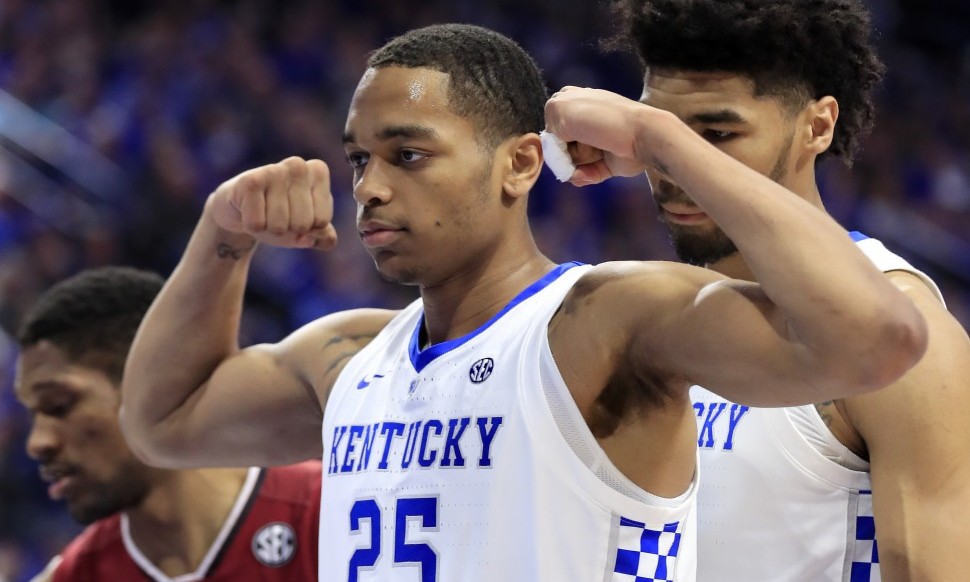
26. Oklahoma City Thunder – P.J. Washington (F, Kentucky)
If Washington’s improved jumper is real, this might be too low for him. He always rebounds, he’s incredibly long and Washington just fills in the gaps like few at the college level. A good value selection late in the first round for a team that could utilize him well.
27. Brooklyn Nets (via Denver) – Charles Matthews (G/F, Michigan)
Can Kenny Atkinson and his staff help Matthews develop his jump shot? If they can, this would be a fantastic pick. Matthews is a tremendous athlete and he’s arguably the best wing defender in the entire draft. It just comes down to whether he can make a reasonable number of open threes. If he can, look out.
28. San Antonio Spurs (via Toronto) – Bruno Fernando (C, Maryland)
Like Hayes, Fernando isn’t going to be a player that NBA teams feature offensively and he doesn’t quite have the same upside in some key areas. Still, Fernando acts as a prototypical rim-runner and rim protector, with the added benefit that he has greatly improved in the past calendar year.
29. Golden State Warriors – Admiral Schofield (F, Tennessee)
The Warriors went with an older, “safe” player with Jacob Evans last year and it isn’t going super well. With that said, Schofield’s appeal comes in his sweet shooting stroke and, as funny as this sounds, Golden State could use another floor-spacer or two in supporting roles.
30. Milwaukee Bucks – Daniel Gafford (C, Arkansas)
Gafford would’ve been a top-15 pick (or so) in the 2018 draft and that class was better than this class projects to be. Why, then, is he falling this far? Well, Arkansas has used him in a weird way offensively and, more importantly, players often see their stock fall with more tape available. Gafford is still a first round talent, though, and the Bucks always seem to love long, athletic players. This would be a heist.






